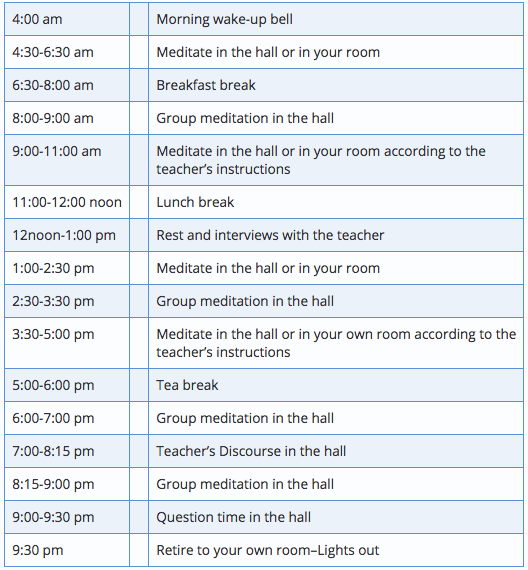# The Art of Remaining Composed Amidst Chaos: A Vipassana Journey
Written on
Chapter 1: The Rigorous Path to Vipassana
Embarking on the journey of Vipassana meditation is no small feat. It entails an intense commitment of 10 hours of meditation daily over a span of 10 days, with no promises of relief from physical discomfort or fatigue. This experience comes with a strict set of guidelines that challenge everyday norms:
- Silence is maintained throughout the retreat.
- All forms of technology, including phones, are prohibited.
- Physical activities like workouts and stretching are not allowed.
- Creative outlets such as music, art, and writing are forbidden.
- Basic ethical principles must be adhered to, including refraining from killing even insects, lying, consuming substances like alcohol or drugs, and engaging in any form of sexual activity.
- Eye contact and unnecessary movement are discouraged.
It raises a question: who willingly subjects themselves to such stringent conditions? Surprisingly, I did, along with countless others.
To give you a glimpse of what a typical day looks like, here’s the schedule:

Chapter 2: The Benefits and Aftermath of Vipassana
So, what drives individuals to endure this ordeal? What rewards do they reap, and what transformations occur afterward? In this section, I will delve into these inquiries, providing insights as I explore them further.
Section 2.1: Transforming Reactions Through Vipassana
Vipassana meditation aims to reshape the mind's habitual responses. It engages deeply with the unconscious aspects of oneself, with the ultimate goal of achieving liberation. This transformation does not come easily; it involves navigating three subconscious phases before genuine change can take root:
- Cognition: The body absorbs information via its six sensory channels—hearing, sight, taste, smell, touch, and thought.
- Recognition: The mind then assigns labels to what it encounters, whether it’s a car engine or a past memory.
- Judgment: This cognitive process assesses the information received, evaluating its safety and evoking related memories and emotions, which in turn influences our reactions.
Our responses are shaped by these judgments. For instance, if a person’s music choice irritates me, I might voice my displeasure, whereas kind words from a loved one might soothe my feelings.
Learning to maintain composure during chaos is about understanding this reactive mind, recognizing its biases, and reprogramming it for more constructive outcomes. Our judgments often stem from ingrained beliefs, cultural influences, and past experiences, making them challenging to alter without conscious effort.
Ram Dass encapsulated this beautifully: “What you meet in another being is the projection of your own level of evolution.” Through interactions with others, we gain insights into ourselves, which can lead us to gratitude rather than blame.
Section 2.2: A Lesson from the Buddha
A poignant story illustrates this concept: an irate old man approached the Buddha, furious that his daughters had abandoned traditional practices in favor of mindfulness. As he stormed toward the Buddha, ready to lash out, the Buddha calmly invited him to sit down. Understanding that proximity to such enlightenment might quell his anger, the old man refused.
The Buddha then posed a question: “Do you receive visitors at your home?” The old man affirmed that visitors often brought gifts. The Buddha continued, “And if a guest presents you with a gift that you cannot accept, what do you do?” The old man explained that he graciously declined the gift.
The Buddha revealed, “You have come to my presence with many gifts of anger, but I cannot accept them; they belong to you.”
This realization struck the old man—his anger was only harming himself.
Through Vipassana, meditators learn to:
- Not take offenses personally.
- Reject the negativity others project.
- Respond consciously to sensations rather than react automatically.
- Embrace the truth of impermanence, often repeating the mantra: “This too shall pass.”
For further insights on the impact of Vipassana meditation, check out:
The Power of Vipassana for Presence | Eckhart Tolle on Meditation Practices - This video explores the transformative effects of Vipassana and how it fosters mindfulness and presence.
Section 2.3: Emotional Awareness Through Mindfulness
To deepen your understanding of emotional responses and mindfulness, take a look at the following video:
Vipassana Out Loud: Mindfulness of Emotions, Guided Meditation Demonstration - This guided meditation demonstrates how to navigate emotions with mindfulness and awareness.
Ultimately, the journey through Vipassana is challenging yet profoundly rewarding. It encourages a deeper understanding of oneself, transforming chaos into calmness and allowing for a more peaceful existence.